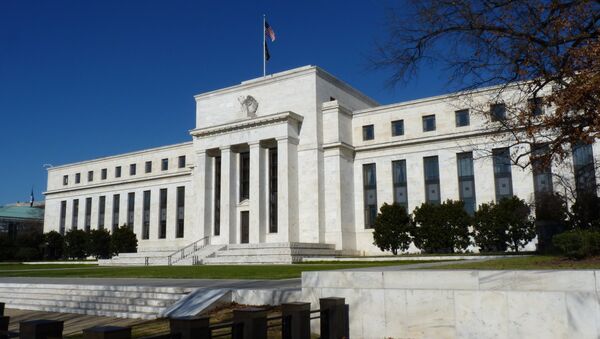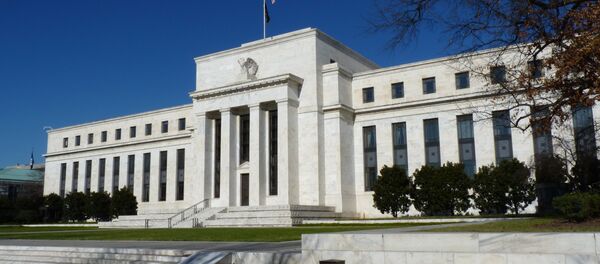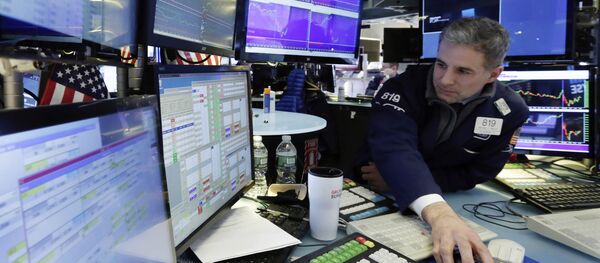Kristian Rouz — After the US economy grew a dismal 0.7 percent in the first quarter, its slowest in three years, the US government, the Federal Reserve, and private sector enterprises have provided their estimates of the near-term growth dynamics. The figures range from moderately optimistic expectations of an economic acceleration after a traditionally sluggish first quarter of the year, to ecstatic projections of over 4-percent expansion as soon as this ongoing quarter.
Yet, amidst the unfavorable structural challenges, monetary and fiscal policy indecisiveness, and lingering foreign trade headwinds, a substantial pickup in US economic activity is likely a longer shot than could be observed at this point.
The US government has made significant progress preparing the overhaul of their fiscal policies in the recent weeks, with President Donald Trump having outlined the preliminary version of his tax cuts plan. Yet, the Commerce Department does not expect a serious economic acceleration this year, because of the existing setbacks in the form of low labor productivity and participation, trade deficit, and insufficient consumer demand.
US economic growth will not exceed an annualized 3 percent — not until the fiscal stimulus is fully enforced, the economy is released from the burden of excessive governmental interference through deregulation, the trade deficit narrowed or eradicated, and energy sector is back on track again, Commerce Secretary Wilbur Ross said.
The 3-percent target set by the Trump administration "is certainly not achievable this year," Ross said. "The Congress has been slow-walking everything. We don't even have half the people in place."
Meanwhile, the US monetary authorities are more optimistic in their GDP assessment. The Federal Reserve Bank of Atlanta said the US economy will grow by 4.2 percent year-on-year in Q2, despite the dramatic slowdown in the beginning of the year. The Fed suggests that the ongoing decline in automotive sales, restraining the broader economic growth, is not a significant challenge because of the rise in inventories, which adds percentage points to GDP.
The Federal Reserve is also more optimistic about the state the US economy is in because the labor market has improved, with unemployment having dropped to 4.4 percent in April, to its 10-year lowest. Another important and closely-watched factor by the Fed is inflation, which in the recent months has been in the gauge of 1.8-2.1 percent, in line with the regulator's target. These two indicators are most important for the Fed evaluating the economy's health, hence the more optimistic GDP expectations.
On their part, one of the biggest US financial sector enterprises, Goldman Sachs, expects the US economy to expand by 2.9 percent in Q2, which is more in line with the Commerce Department's expectations. Goldman also said the first-quarter GDP was likely 0.9 percent growth rather than the initially-reported 0.7 percent due to the March build-up in business inventories.
"Data suggested a firmer pace of inventory investment in the first quarter but a somewhat smaller contribution to growth in the second quarter," Spencer Hill and Avisha Thakkar of Goldman Sachs wrote.
The Commerce Department, along with the rest of the US government, is concerned about the possible negative impact of partisan politics in Washington to the economic policies proposed by the White House. Extended standoffs in Congress are possible, and whilst the Democrats are most certainly opposed to almost any White House initiative, the Congress Republicans are likely more preoccupied with revenue neutrality — whereas Trump does not mind adding to the US public debt in order to spur the economic growth.
"Congressional delays are actually causing more of an import problem from Mexico than we had before," Commerce Secretary Ross said.
Ross also believes the administration would be more aggressive enforcing its agenda, including a review of foreign trade rules, where deficits are currently hurting the US economy. Ross said the government is also focusing on the anti-dumping and anti-subsidy measures to help domestic US producers of goods become more competitive.
"I believe that enforcement will be one of the major tools for fixing things," Ross said.
While improvements in the policy and regulation side will certainly take time to negotiate, coordinate and enforce, their effects, positive or negative, will take even more time to pass on to the economy. This means the US economic growth dynamics throughout this year will be determined by the existing rules and patterns, which have been a characteristic of the past five-seven years.
Therefore, the 3-percent growth target is indeed hardly achievable this year, even though the upcoming quarters of this year might showcase some solid acceleration.
"We expect faster growth in subsequent quarters to help compensate for the slow start to the year, but we only anticipate full-year 2017 real GDP growth of 2.1 percent," Sam Bullard of Wells Fargo said.




